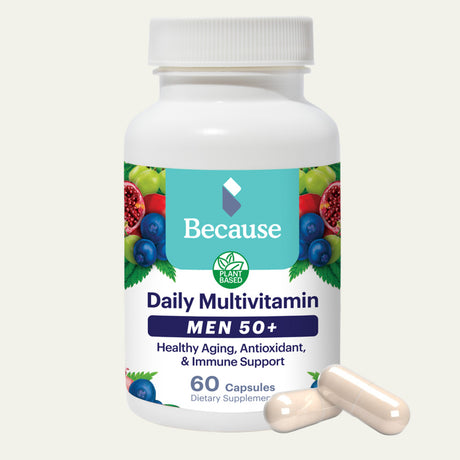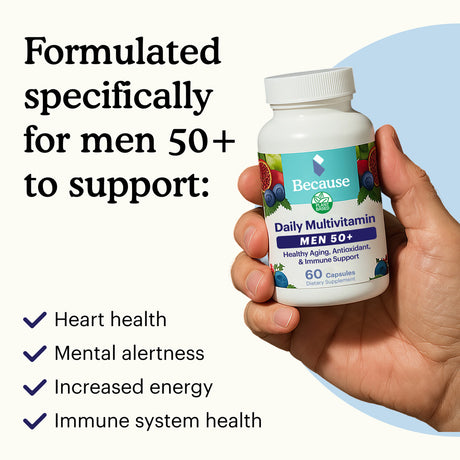As we learn more and more about the uses and benefits of CBD, there seems to be no end to what hemp can help with. From promoting calm and relief from mental stress to helping to temporarily soothe joint pain and back pain, CBD extends to many benefits. One of the most popular of these uses is for pain. From tenderness in muscles and tendons to everyday aches, CBD’s soothing properties are abundant and widespread!
In order to understand the effectiveness of CBD for back pain, it’s important to understand how it works in our bodies. This involves the endocannabinoid system and how our receptors and enzymes help carry out the health benefits of CBD.
So, can CBD oil be used for back pain? Absolutely! This article breaks down how CBD can be used for back pain and why it’s so effective in the body.
Back Pain
According to the American Chiropractic Association, back pain is the leading cause of disability in the world. In addition, research shows that as many as 80% of the population will experience severe back pain at some stage in their lives. The severity of back pain is different depending on a variety of factors, but when it’s severe enough, it can keep people from doing everyday activities such as working, taking care of their families, and participating in physical activity.
Back pain can be caused by various factors. Here are some of the most common conditions associated with extreme levels of back pain:
-
Injury. Injuries, whether past or present, can result in back pain. Especially if you strained a muscle or tore a ligament, you may experience muscle spasms and aching in your lower or upper back. Strains occur during heavy lifting repeated movements.
-
Ruptured Disc. Discs are parts of your back that act as cushions for your bones, so they don’t run into each other painfully. If these discs rupture or become damaged, they may cause back pain and nerve damage.
-
Arthritis. A common cause of back pain is arthritis. Arthritis is characterized by inflammation and pain in joints due to deterioration of the synovial membrane or of cartilaginous bone. Back pain caused by arthritis is mostly in the lower back.
- Osteoporosis. Osteoporosis occurs when bones become weaker and less dense. When this happens, the vertebrae of the spine can break and become damaged, causing back pain and discomfort.
Back pain can be a debilitating challenge for many and can affect anyone regardless of age, gender, and physical activity (though there are some risk factors). Luckily, the treatments and management of back pain are increasing and becoming more accessible.
How Does CBD Work for Back Pain?
One of the most common uses for CBD is temporarily soothing everyday aches and pains. The effects of CBD for alleviating this pain rely on the endocannabinoid system in our bodies.
Endocannabinoid System
The endocannabinoid system is a naturally occurring cell-signaling system in our bodies and in the bodies of most mammals. It is responsible for promoting homeostasis and relaxation.
Some common processes that this system is involved in include our bodies are mood, memory, stress, appetite, heart health and function, and pain. CBD interacts with the endocannabinoid system by binding to receptors in the brain and immune system to carry out a variety of functions, including relief from back pain.
Endocannabinoid receptors
The receptors that receive CBD and other cannabinoids are small proteins attached to the cells. The two main endocannabinoid receptors are CB1 and CB2 receptors.
CB1 receptors
CB1 receptors are found in the central nervous system, which is made up of the brain and spinal cord. They play a role in pain, memory processing, and motor control. This receptor is presynaptic, meaning it comes before the synapses of neurons and can act as both an inhibitor and excitor.
CB2 receptors
CB2 receptors are found in the peripheral nervous system and the tissues and cells of the immune system, brain, and liver. These receptors can affect inflammatory processes and monitor our body’s pain response.
Endocannabinoid
These receptors act as targets for endocannabinoids in the body. Our body has two naturally occurring endocannabinoids that act similar to CBD in the body. These are AEA and 2-AG. These endocannabinoids are sent to bind to either CB1 or CB2 receptors to influence pain and inflammation.
Enzymes
Enzymes are responsible for breaking down the endocannabinoids naturally found in our bodies or consumed from hemp and disposing of them once they’ve carried out their function. This is an important process of how our endocannabinoid system works as a whole to promote health!
Antioxidants
Antioxidants are important nutrients found in vitamins, fruits, foods, and CBD that can fight free radicals to protect our bodies against oxidative stress. Free radicals can be dangerous when they exceed our body’s ability to defend against them. Antioxidants play an important role in protecting the body from stressors, which can lead to discomfort and inflammation.
Should I Use Topical CBD or Oral CBD for Back Pain?
It is clear that CBD can help with working to soothe back pain, but what kind of CBD should you use to do this and why? The two main types of CBD are those you ingest orally and those you apply topically. Each type is characterized by how it works in the body to help soothe discomfort.
For instance, orally ingestible CBD products can be chewed, swallowed, or allowed to absorb sublingually (under the tongue). This form of CBD enters the bloodstream and targets endocannabinoid receptors there to target and soothe pain.
Topical CBD products, on the other hand, can be massaged onto an affected area, for relief that works on site. Topical CBD does not enter the bloodstream but is rather absorbed by the skin to provide targeted relief.
Topical CBD products tend to work faster than orally ingested products as they are placed directly onto affected areas and don’t have to travel through the body to get to work. These topical CBD products are often rich in other nourishing, healing, and hydrating properties that promote relief and health as well.
Oral CBD, such as CBD gummies or tinctures, works for pain management as well, but it may not work as quickly as a topical product would. When it comes to back pain, topical CBD can be an effective way to soothe stubborn tension.
Consider a full-spectrum hemp relief cream for targeted relief that works immediately. You can also use a roll-on hemp relief applicator to massage CBD right into where it hurts.
Other Tips for Soothing Back Pain
Here are some of our favorite tips for promoting relief from back pain.
- See your doctor or chiropractor.
- Exercise and eat a low-fat diet to maintain a healthy weight and range of motion.
- Avoid bed rest or inactivity for long periods of time.
- Be sure to warm up and stretch muscles before participating in exercise or active hobbies such as gardening or sports.
- Smoking inhibits proper blood flow to the heart and to the tissues, which can damage spinal tissues and cause pain, so if you smoke, consider quitting.
- Wear comfortable shoes.
- Perform posture exercises.
- Sleep on a mattress that offers support all night long.
- Don’t participate in physical activities if it begins to hurt or put a strain on your back. Also avoid lifting heavy objects.
- Consider performing exercises to relieve back pain such as stretching or yoga.
- Since CBD demonstrates powerful management of pain that’s difficult to treat and soothe, use CBD products to promote relief from back pain!
Summary
The effects of CBD are widespread and apply to various areas of health. From wellness benefits like promoting calm and relaxation and helping with stress management, to soothing and alleviating discomfort, the benefits of CBD seem to be never-ending.
And luckily, these benefits extend to back pain.
Back pain is a common challenge, affecting around 80% of the population at some point in their lives. It can be a debilitating challenge to live with, especially if you are unaware of how to manage and treat it effectively. CBD may be an inexpensive, safe, and easy way to temporarily ease pain soothe discomfort in the back.
For more information on CBD products, check out:
CBD Tincture vs. Oil: Which One is Better for You
Sources:
Frontiers in Pharmacology. (2018). Use of Botulinum Toxin in Chronic Pain Conditions: An Updated Review. https://www.frontiersin.org/articles/10.3389/fphar.2018.01259/fullNational Center for Biotechnology Information (NCBI). (2009). Neuropathic Pain: Diagnosis, Pathophysiological Mechanisms, and Treatment. https://www.ncbi.nlm.nih.gov/pmc/articles/PMC2771434/#:~:text=In%20accordance%20with%20our%20Law,neuropeptides%2C%20growth%20factors%20and%20neurotransmitters.
Mayo Clinic. (n.d.). Back Pain. https://www.mayoclinic.org/diseases-conditions/back-pain/symptoms-causes/syc-20369906
American Chiropractic Association. (n.d.). Back Pain Facts and Statistics. https://www.acatoday.org/Patients/What-is-Chiropractic/Back-Pain-Facts-and-Statistics














